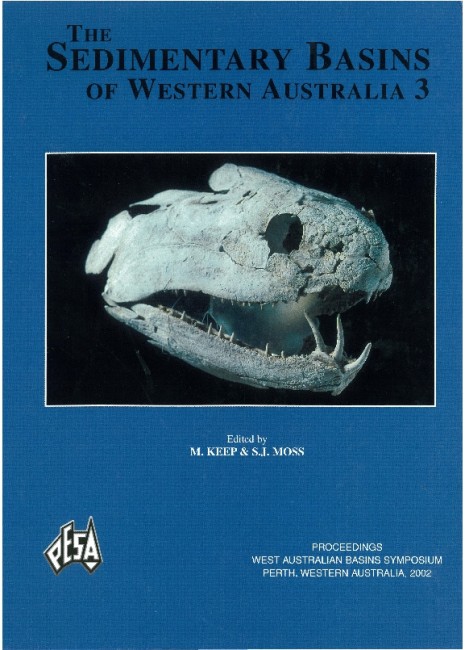Publication Name: The Sedimentary Basins of WA
Authors: P. Playford
Publication Volume: 3
Date Published: December 2002
Number of Pages: 48
Reference Type: Book Section
Abstract:
Limestones in Devonian reef complexes of the Canning Basin have been subjected to several episodes of karstification, during the Late Devonian, latest Devonian or Early Carboniferous, Early Permian, and Cainozoic.Subaerial Devonian palaeokarst formed after platform emergence at the end of the Frasnian and during the
latest Famennian. Those events define second-order sequence boundaries at the tops of the Givetian-Frasnian
Pillara Sequence and the Famennian Nullara Sequence. Five other events, associated with the backstepping of Frasnian platforms, define third-order sequence boundaries.
Hydrothermal palaeokarst developed beside active faults during the latest Devonian or Early Carboniferous,
resulting in caverns that were filled penecontemporaneously, or very soon after they were formed, with zinclead
mineralisation. Tubular structures between microbial columns in Famennian reef limestone, described as
palaeokarst by some authors, are here interpreted as pseudokarst, unrelated to karstification.
The most extensive palaeokarst (including cave systems, karst corridors, solution dolines, tunnels, tower karst, N-channels, and collapse breccias) was formed by intensive solution of the Devonian limestones in subglacial
meltwater, below the last of a series of mid Carboniferous to Early Permian continental ice sheets. Those ice sheets eroded the faulted and tilted reef complexes to form a nearly level surface, removing more than 2,000 m of Devonian and Carboniferous section from some areas. A well-exposed glacial pavement shows that the Early
Permian ice sheet, possibly as much as 2 km thick, moved towards the north to north-northwest. The Early Permian palaeokarst, exhumed during the Cainozoic, has been incorporated into the modern karst topography in many areas. Some of the exhumed caves contain Late Tertiary or early Pleistocene bone deposits; others were used by the Aborigines as dwelling places, galleries for rock art, and tombs for the dead.


